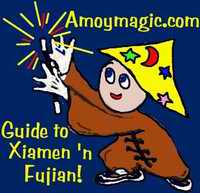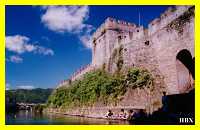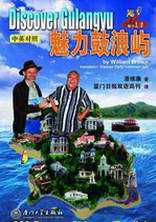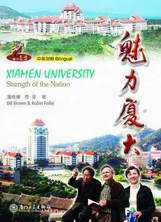![]() Click
to
Access
Click
to
Access
OUTSIDE China
![]() Click
to Access
Click
to Access
INSIDE
China ![]()
TRAVEL LINKS
![]() Xiamen
Xiamen
![]() Gulangyu
Gulangyu
![]() Jimei
Jimei
![]() Tong'an
Tong'an
![]() Jinmen
Jinmen
![]() Zhangzhou
Zhangzhou
![]() Quanzhou
Quanzhou
![]() Wuyi
Wuyi
![]() #1Fujian
Sites!
#1Fujian
Sites!
![]() Fujian
Foto Album
Fujian
Foto Album
![]() Books
on Fujian
Books
on Fujian
![]() Readers'Letters
Readers'Letters
![]() Ningde
Ningde
![]() Zhouning
Zhouning
![]() Longyan
Longyan
![]() Sanming
Sanming
![]() Putian
Putian
![]() Bridges
Bridges
![]() Travel
Info,
Travel
Info,
![]() Hakka
Roundhouses
Hakka
Roundhouses
![]() Travel
Agents
Travel
Agents
MISC. LINKS
![]() Amoy
People!
Amoy
People! ![]()
![]() Darwin
Driving
Darwin
Driving ![]()
![]() Amoy
Tigers
Amoy
Tigers
![]() Chinese
Inventions
Chinese
Inventions
![]() Tibet
in 80 Days!
Tibet
in 80 Days!![]()
![]() Dethroned!
Dethroned!
![]()
![]() Misc.Writings
Misc.Writings
![]() Latest
News
Latest
News
![]() Lord
of Opium
Lord
of Opium
![]() Back
to Main Page
Back
to Main Page
![]() Order
Books
Order
Books![]() Xiamenguide
Forum
Xiamenguide
Forum 

 Business
Links
Recreation Links Google
Search E-mail
Business
Links
Recreation Links Google
Search E-mail
"Little
Red Religious Center!"
(Click Thumbnails for larger images)
Click for Changting Page 1 Introduction
to "Little Red Shanghai"
Click for Changting
Page 3 (Hakka Cuisine and "Drinking Culture")
Click for Changting
Page 5 (Hakka Hamlet of Tufang)
 Click
for Changting Photo Album by Photographer
"Babushka" (Great
Photos of Hakka Festivals!)
Click
for Changting Photo Album by Photographer
"Babushka" (Great
Photos of Hakka Festivals!)
Buddhists and Taoists at the Same Table ItˇŻs ironic that Little Red Shanghai is also a Little Red Religious Center. Changting hosts at least a dozen religionsˇŞeverything from Buddhism, Confucianism, Catholicism, Taoism, and Protestantism to Mazu worship, animism, Hakka Mother worship, and the State Sports Lottery. One Changting mountain has a Buddhist temple on the bottom and Taoists on the top. Babushka exclaimed, ˇ°Rare indeed when both Buddhists and Taoists eat from the same plate!ˇ±
 Confucius
and Cobwebs ChangtingˇŻs enormous Confucian temple, built
in 1133 AD, is currently under restoration. My guide proudly informed
me, ˇ°Taiwan has an exact duplicate of this temple. And in almost 1000
years it has never had cobwebs. ItˇŻs a miracle!ˇ± But come to think of
it, IˇŻve never seen cobwebs in churches either. (Maybe I can go online
and get the secret off the 'web'?)
Confucius
and Cobwebs ChangtingˇŻs enormous Confucian temple, built
in 1133 AD, is currently under restoration. My guide proudly informed
me, ˇ°Taiwan has an exact duplicate of this temple. And in almost 1000
years it has never had cobwebs. ItˇŻs a miracle!ˇ± But come to think of
it, IˇŻve never seen cobwebs in churches either. (Maybe I can go online
and get the secret off the 'web'?)
Southern Meditation Temple (Ä϶UËÂNanchan
Si) Chinese admire Yugong, who patiently shoveled away at two troublesome
mountains that blocked his way and his view. He said, ˇ°If I die before
itˇŻs finished, my sons will continue, and grandsons, and their grandsonsˇ.ˇ±
Chinese admire Yugong, who patiently shoveled away at two troublesome
mountains that blocked his way and his view. He said, ˇ°If I die before
itˇŻs finished, my sons will continue, and grandsons, and their grandsonsˇ.ˇ±
God eventually took pity and moved the mountains, and the moral is [Fortune
cookie, please!] ˇ Never give up and youˇŻll succeed!
 ChangtingˇŻs
Buddhists havenˇŻt moved mountains, but theyˇŻve leveled one! They lopped
off an entire mountain to provide the perfect fengshui for the Song Dynasty
Southern Meditation Temple, which is being rebuilt at a cost of over 50
million Yuan!
ChangtingˇŻs
Buddhists havenˇŻt moved mountains, but theyˇŻve leveled one! They lopped
off an entire mountain to provide the perfect fengshui for the Song Dynasty
Southern Meditation Temple, which is being rebuilt at a cost of over 50
million Yuan!
By 2010, this will be the largest Buddhist complex in Jiangxi, Fujian
and Guangdong provinces, with three temples on three different levels,
one containing a massive Buddha carved of pure white jade.
They must have felled a forest for the beautifully engraved wooden columns,
posts, and eaves. Too bad theyˇŻll soon be painted in gaudy red, yellow
and blue. I much prefer North FujianˇŻs earthy whites and browns.
The Buddhist Abbess asked me, ˇ°Does Xiamen University have a Department
of Religions?ˇ±
ˇ°I donˇŻt think so,ˇ± I said, ˇ°but I teach business, which is like a
religion for some people.ˇ±
She ignored me and said, ˇ°We want to start a religious study center,
perhaps in Xiamen, or Fuzhou.ˇ±
The idea intrigued me. Xiamen has NanPuTuo monastery and ChinaˇŻs oldest
Protestant church. Only 90 minutes to the north is Quanzhou,
UNESCOˇŻs World Museum of Religion.

Maybe I should start taking up a collection.
After the Nanchang Temple I visited the nondescript Catholic church, built around 1920 or so. It was tucked away inconveniently down Shuimen Gang (Ë®ĂŸŰ), a side alley off ZhaoZheng Rd. (Ő×֤·), and locked up tight. But I enjoyed watching the lady outside the gate make miniature umbrellas. Some children offered me some of their mud pies. ˇ°Next time,ˇ± I promised, and made a mental note to be sure there was no next time.
MazuˇŻs
Tianhou Palace (͡Ö޸®Ěěşóą¬ ) Landlocked Changting boasts the largest of the Ting RiverˇŻs 19 Palaces
to Mazu Goddess of Seafarers, because until only recently, the Ting was
their only means of transportation. Today, the eternally young goddess
resides in style in the TianHou Palace (Ěěşóą¬).
Landlocked Changting boasts the largest of the Ting RiverˇŻs 19 Palaces
to Mazu Goddess of Seafarers, because until only recently, the Ting was
their only means of transportation. Today, the eternally young goddess
resides in style in the TianHou Palace (Ěěşóą¬).
To reach Miss MazuˇŻs place, I headed north on ZhaoZheng Rd. (Ő×֤·)
to Shui Dong Street (Ë®¶«˝Ö). Across the street from the Ting River Mansion
(Tinjiang DaSha, ͡˝´óĎĂ), I hung a left down the narrow alley guarded
by a granny making wooden scrub brushes and a lady selling fish that swam
about blissfully in red and blue plastic basins, unaware of their fishy
fates.
Halfway across the
ancient bridge I stopped for photos of the Ting River flowing past the
magnificent Tang Dynasty walls, and caught a few shots of the women below,
pounding their laundry to pieces on river boulders.
Across the river a vine- and moss-covered wooden house was perched above
a Tang Dynasty gate. I took the road to the right, past old buildings
of the simple, unadorned, time-stained wooden architecture that I love.
One wooden shack overhanging the street reminded me of a suspended gypsy
caravan.
The road was lined on both sides with Hakka selling vegetables, meats,
sacks of grains (barley, lentils, peas, rice), spare parts for woks and
electric hot plates and kettles, and assorted bits of hardware spread
out on sheets. Just up the river, on the left, at the entrance to MazuˇŻs
TianHou Palace (Ěěşóą¬), a grinning grandpa greeted me with (what else?),
ˇ°YouˇŻve come! Have some tea!ˇ±
Cross-Straits
Mazu Meeting The monks bustled about preparing for a delegation of 40 Mazu worshippers bringing their family idols from
Taiwan on March 30th (two days later). The little Mazu idols travel in
style. Chinese often book a separate airline ticket for the idol. I wonder
if they request vegetarian food for her?
for a delegation of 40 Mazu worshippers bringing their family idols from
Taiwan on March 30th (two days later). The little Mazu idols travel in
style. Chinese often book a separate airline ticket for the idol. I wonder
if they request vegetarian food for her?
Loudspeakers played some kind of chant tape, though I canˇŻt tell a Buddhist
chant from a Mazu chant. Both are repetitive, drone-like affairs. But
in QuanzhouˇŻs Kaiyuan Temple I once heard an English chant tape. Either
the monks were studying English or it was an attempt to convert foreign
devils to Buddhism. The tape repeated, over and over in the same funeral
monotone, ˇ°Happy Birthday to You, Happy Birthday to You,ˇ±ˇŞfor an entire
60 minutes!
But whatˇŻs 60 minutes in the eternal scheme of things?
Ohmmmmm.
 MazuˇŻs
Christmas Trees Wafts of smoke rose
MazuˇŻs
Christmas Trees Wafts of smoke rose from giant urns impaled with humongous incense sticks. Four smaller statues
guarded a 300-year-old statue of Mazu hiding behind the urns.
from giant urns impaled with humongous incense sticks. Four smaller statues
guarded a 300-year-old statue of Mazu hiding behind the urns.
One was a blue man with horns, the other a red man with one horn in his
forehead, and the other two were fair maidens. Two fair maidens and two
horny men. It was food for thought.
To Miss MazuˇŻs left and right were ten-foot Christmas tree-like cones
decorated with 3,600 illuminated gold images of Mazu. They revolve constantly,
but MazuˇŻs monks were happy to put the brakes on them long enough to
allow me a few good photos.
Sixty Yuan a year gets your name below one of the 7,200 gold Mazus. After
some quick math, I wondered why on earth IˇŻm teaching business to Chinese.
They could teach us capitalists a thing or two.
 MazuˇŻs
Boudoir When not holding court, Mazu hangs out in her
ornate chamber behind the temple. The front room has a round table with
a polished stone table with five elegant bowls of rice set out with chopsticks,
and saucers full of delectable vegetarian fare. Her private boudoir in
back boasts a carved wooden bed hung with rich tapestries---not bad for
a girl who renounced the world and everything in it! With similar chambers
in Tianhou palaces around the world, she must be netting quite a profit
from saving ships.
MazuˇŻs
Boudoir When not holding court, Mazu hangs out in her
ornate chamber behind the temple. The front room has a round table with
a polished stone table with five elegant bowls of rice set out with chopsticks,
and saucers full of delectable vegetarian fare. Her private boudoir in
back boasts a carved wooden bed hung with rich tapestries---not bad for
a girl who renounced the world and everything in it! With similar chambers
in Tianhou palaces around the world, she must be netting quite a profit
from saving ships.
To the right of MazuˇŻs boudoir is a statue of her ever vigilant mother
and father. An inscription by the DaoGuang Emperor, written 170 years
ago, memorializes those who contributed to the renovation of MazuˇŻs templeˇŞeven
though they never got their names on the electric Christmas trees.
The monks served tea and explained the templeˇŻs history and their plans
for expansion, and then we headed to the Protestant Church where Comrade
Zhou EnLai made his headquarters in April 1932.
Church
of the Revolution
Just across the river from MazuˇŻs  temple
is the Protestant church commandeered by the Communist Party in the 1920s.
The sign reads, ˇ°Putian Tongqingˇ± (ÇěͬĚěĆŐ), ˇ°Let all under heaven
rejoice.ˇ± IˇŻm not sure who wrote itˇŞthe Communists or the Christians.
temple
is the Protestant church commandeered by the Communist Party in the 1920s.
The sign reads, ˇ°Putian Tongqingˇ± (ÇěͬĚěĆŐ), ˇ°Let all under heaven
rejoice.ˇ± IˇŻm not sure who wrote itˇŞthe Communists or the Christians.
Protestants have been in Changting about a century. In 1908, the London
Missionary Society opened the Gospel Hospital (¸ŁŇôҽԺ) on East Gate
St. (¶«ĂĹ˝Ö, Dongmen Jie). It became the Red Army hospital in 1925, and
one of the foreign missionary doctors is famous for his patriotic support
of the Communist partyˇŞand for delivering one of MaoˇŻs sons.
The Protestant church was designated a National Level Historic Preservation
site in 1960, but used as a government office until 1988, when it was
returned to Christians.
 As
I photographed the churchˇŻs locked exterior, two ladies in their eighties
rushed out, raised their arms and voices in greetings and ushered us into
the church courtyard through a side door. They apologized for the locked
doors, explaining that burglars had recently stolen their TV, VCR, and
other valuables.
As
I photographed the churchˇŻs locked exterior, two ladies in their eighties
rushed out, raised their arms and voices in greetings and ushered us into
the church courtyard through a side door. They apologized for the locked
doors, explaining that burglars had recently stolen their TV, VCR, and
other valuables.
One ladyˇŻs husband was the doctor who patched up my guide when he was
a rascally child, never imagining the mischievous kid would grow up to
be a big potato in the city!
This couple had moved to Changting during the Japanese air raids of 1942.
She too was a doctor, trained in Russian methods of medicine. She was
the best midwife in town. ˇ°When there was no hope for either mother or
child,ˇ± she said, ˇ°they called me in as the last resort, and I usually
saved both.ˇ±
Her apartment was a crowded museum of the past. Wall-to-wall photos from
the 1920s and 1930s included her daughter, a martial arts expert, and
her five grandsons, six granddaughters, and other relatives, some of whom
are professors at Xiamen University.
Books and pamphlets were stacked everywhere, even on the mosquito net-covered
four-poster bed. Her biggest treasure was a giant large-print bible mailed
to her in 1992 by a man in Taipei, Taiwan. Beneath a poster of a cross
with the Chinese inscription, ˇ°Jesus Loves the World,ˇ± was a photo of
Deng Xiao Ping. But it doesnˇŻt hurt to cover all your bases.
 Birth
of a Revolution--in a Church? A padlocked, green wooden
door behind the church led to Zhou EnlaiˇŻs former quarters. We ascended
the dusty, narrow wooden steps to the top floor, and the plain wooden
rooms where the Revolution was born.
Birth
of a Revolution--in a Church? A padlocked, green wooden
door behind the church led to Zhou EnlaiˇŻs former quarters. We ascended
the dusty, narrow wooden steps to the top floor, and the plain wooden
rooms where the Revolution was born.

I sat at Zhou EnlaiˇŻs plain wooden desk and looked out at the Ting River
and the cityˇŻs Tang Dynasty Walls. The contrast between the simplicity
of the place and the scope of its implications was mind-boggling.
I suspect Zhou and Mao had no idea that the strategies they scrawled on
a cheap blackboard would eventually drive out us foreign devils, and transform
an ancient culture on the verge of senility into a superpower with Long
March Rockets, Shanghai fashion shows, Big Macs,
and Wal-Marts.
The rooms that birthed a nation are now storerooms, but no one dares touch
Zhou EnlaiˇŻs bedroom, which still has nothing but the small bed, humble
wooden desk, and one rickety chair.
Plain, but charged with power and destiny.
The English Revolution The main hall is now the site of another revolutionˇŞthat of language. One way China is reintegrating with our shrinking global community is by teaching the masses English. The former hall of the revolution now holds weekly English lessons around the long green wooden table, pews, and blackboard, where the pastor has scrawled in neat English cursive, ˇ°Nice to meet you!ˇ±
Click Here for Changting Page 5 (Hakka Hamlet of Tufang)
P.S. DonˇŻt miss these great Changting Sites!
Source of the Ting River
Ancient Well
(ŔϹž®Laogu Jing)
ChangtingˇŻs oldest well, considered a miracle because it never dries
up, whatever the conditions. On top of that, while Mao ZeDong lived in
Changting, every morning he used the well to wash his face, brush his
teeth, and clean his clothes (not necessarily in that order). And to make
the well healthier, he brought in a well specialist, which I thought was
a well-meaning gesture.
Tingzhou Hakka Research Institute (ÖĐąú͡Ö޿ͼŇŃĐľżÖĐĐÄ Zhongguo Tingzhou Kejia Yanjiu Zhongxin)
Tingzhou
Ancient City Wall (͡Ö޹ųÇÇ˝Tingzhou Gucheng Qiang)
Tang Dynasty, at least 1200 years old.
Dragon Hill against White Clouds (ÁúÉ˝°×ÔơŞLongshan Baiyun) ¨C the Jin Sha Temple.
Zhongshan
Park and the Qiu Bai Pavilion (Çď°×ͤ Qiubai Ting).
Every two-ox town in China has a Zhongshan Park (named after Sun Yat-sen,
but called Lenin Park during the Soviet Chinese days). The Qiu Bai Pavilion
is named after Qiu Bai, the young revolutionary martyr. To the rear of
the Hakka Museum you can see where he was imprisoned, and where he was
shot.
Hakka Girls. TheyˇŻre everywhere. Please just take photos, not the girls.
Chaodou RockˇŻs
Shuiyun Temple. The Buddha is said to have his back to tourists
because heˇŻs piqued that so few people repent and begin life anew.
Xiamen UniversityˇŻs Former Campus (ĎĂĂĹ´óѧУ±ľ˛żľÉÖ·)
A Xiamen
University professor told me China had 5000 years of history but that
was 18 years ago, so now its 5018 years of history.
And 3 months.
![]() Favorite
Fujian Sites
Favorite
Fujian Sites ![]() Fujian
Foto Album
Fujian
Foto Album ![]() Xiamen
Xiamen
![]() Gulangyu
Gulangyu
![]() Fujian
Guides
Fujian
Guides ![]() Quanzhou
Quanzhou
![]() Zhangzhou
Zhangzhou
![]() Longyan
Longyan
![]() Wuyi
Mtn
Wuyi
Mtn ![]() Ningde
Ningde
![]() Putian
Putian
![]() Sanming
Sanming
![]() Zhouning
Zhouning
![]() Taimu
Mtn.
Taimu
Mtn. ![]() Roundhouses
Roundhouses
![]() Bridges
Bridges
![]() Jiangxi
Jiangxi
![]() Guilin
Guilin
![]() Order
Books
Order
Books
![]() Readers'
Letters
Readers'
Letters
Last Updated: May 2007
![]()
DAILY
LINKS
![]() FAQs
Questions?
FAQs
Questions?
![]() Real
Estate
Real
Estate
![]() Shopping
Shopping
![]() Maps
Maps
![]() Bookstores
Bookstores
![]() Trains
Trains
![]() Busses
Busses
![]() Car
Rental
Car
Rental
![]() Hotels
Hotels
![]() News
(CT)
News
(CT)
![]() Medical
& Dental
Medical
& Dental
![]() YMCA
Volunteer!
YMCA
Volunteer! ![]()
![]() XICF
Fellowship
XICF
Fellowship
![]() Churches
Churches
![]()
![]()
![]() Temples
Temples![]()
![]() Mosque
Mosque
![]() Expat
Groups
Expat
Groups
![]() Maids
Maids
![]() Phone
#s
Phone
#s
EDUCATION
![]() Xiamen
University
Xiamen
University
![]() XIS(Int'l
School)
XIS(Int'l
School)
![]() Study
Mandarin
Study
Mandarin
![]() CSP(China
Studies)
CSP(China
Studies)
![]() Library
Library
![]() Museums
Museums
![]() History
History
DINING
![]() Restaurants
Restaurants
![]() Asian
Asian
![]() Veggie
Veggie
![]() Junk
Food
Junk
Food
![]() Chinese
Chinese
![]() Italian
Italian
![]() International
International![]()
![]() Visas
4 aliens
Visas
4 aliens
RECREATION
![]() Massage!
Massage!
![]() Beaches
Beaches
![]() Fly
Kites
Fly
Kites
![]() Sports
Sports
![]() Boardwalk
Boardwalk
![]() Parks
Parks
![]() Pets
Pets
![]() Birdwatching
Birdwatching
![]() Kung
Fu
Kung
Fu ![]() Hiking
Hiking
![]() Music
Events
Music
Events
![]() Festival&Culture
Festival&Culture
![]() Humor&
Humor&![]() Fun
Fotos
Fun
Fotos![]()
BUSINESS
![]() Doing
Business
Doing
Business
![]() Jobs!(teach/work)
Jobs!(teach/work)
![]() Hire
Workers
Hire
Workers
![]() Foreign
Companies
Foreign
Companies
![]() CIFIT
(Trade Fair)
CIFIT
(Trade Fair)
![]() MTS(Translation)
MTS(Translation)
![]()
Back to Top





